Wondering if you should publish your book with IngramSpark, and what the competitive advantage in doing so will be?
IngramSpark is a company that almost every author in the self-publishing industry has heard of, but not everyone has direct experience with or knowledge on this publishing service.
After writing a book, which is a struggle in itself, a whole new set of difficulties can pop up for authors lacking the technical skills and industry knowledge for self-publishing.
Amongst that, there is often a lot of confusion surrounding why an author might choose to publish with IngramSpark as opposed to other competing self-publishing companies.
We want you to make informed decisions when it comes to how and where to invest your money. That’s why our mission is to help educate authors on the various self-publishing companies and services that are on the market today.
Our reviews are meant to be unbiased, 3rd party reviews, but we will speak up if there is a scam or a clearly better option.
In this detailed article, we’ll take a close look at this publishing and distribution company by reviewing its services, pros and cons, and the step-by-step process on how to upload and publish your book through IngramSpark.
Here’s what we’ll cover in this detailed IngramSpark review:
- What is IngramSpark?
- What services does IngramSpark offer?
- How does IngramSpark work?
- Where does IngramSpark distribute?
- IngramSpark Review: Global Connect Model
- How much does IngramSpark cost?
- Reasons to publish with IngramSpark
- IngramSpark vs KDP
- Step-by-Step Guide: Upload a book to IngramSpark
- The pros and cons of IngramSpark
- IngramSpark Review: Is it worth it?
What is IngramSpark?
IngramSpark (IS) is a self-publishing company with a global distribution network, that allows self-published authors to publish and distribute print books and eBooks.
IngramSpark's global distribution network is called Ingram Book Group. Established nearly 50 years ago, Ingram Book Group (IBG) is the largest book distributor in the world, serving 39,000+ book retailers worldwide, of both the brick-and-mortar and online variety.
So, in a sense, it is a very big deal for many authors and publishers to be locked into publishing with IngramSpark.
Ingram’s primary function is to channel books from publishing houses to retailers, but the distributor also owns the world’s most technologically advanced print-on-demand company, Lightning Source, which produces books at multiple facilities around the world.
Since books uploaded through IngramSpark are entered into the same database as frontlist titles from established publishers, retailers can search for and order these books as they would any other distributed title. When such orders are placed, your book is printed-on-demand and shipped to the retailer to be sold in bookstores.
Where is IngramSpark located?
The IngramSpark headquarters are in La Vergne, Tennessee, near the city of Nashville. It also has four Ingram print facilities in the U.S., as well as print facilities in other countries such as Brazil and Australia that serve main market segments.
However, since it is a print-on-demand self-publishing company and global distributor, IngramSpark operates throughout the country.
What is IngramSpark's print on demand?
Print on Demand (POD) is a printing technology and business process through which your book is only printed once it is actually purchased. POD books are printed and shipped as soon as someone clicks the “Buy Now” button and completes the purchase. Not a single copy is printed before that, which means there isn’t a need for a storage solution to hold thousands of your books.
POD is an efficient, space-saving solution for many authors, since there is not a risk involved in having to pay for books to be printed upfront, without any guarantee that they will be purchased.
IngramSpark has become one of the main go-to companies for self-published authors in need of POD services to print and distribute paperbacks and hardcover books.
We will take a look at these questions in this IngramSpark review, and the overall breakdown of the system they use to print and distribute books for authors.
What services does IngramSpark offer?
IngramSpark is not an all-in-one self-publishing company. It handles publishing, specific to its book distribution network.
It is also not a company that offers done-for-you services to publish your book, so if this is the type of company you're in need of, then IngramSpark might not be for you.
Related: How to Publish a Book
IngramSpark's services come in handy when you're ready to publish a book. If you need to write a book or are still in the production phases of editing and cover design, you won't be able to use IngramSpark services quite yet.
Here are the services offered by IngramSpark:
- Print on demand services for print books
- Customized printing options for print books (trim size, binding, paper, etc.)
- Self-publishing service to IngramSpark's platform
- Book distribution to global partners (40,000 retailers and libraries)
- Available distribution to Amazon, Apple, Kobo, and Barnes and Noble (you must meet certain criteria for Amazon and Apple)
- Customer support via email during business hours
- Free resources such as a blog, self-publishing courses, podcast, guide, and expert community
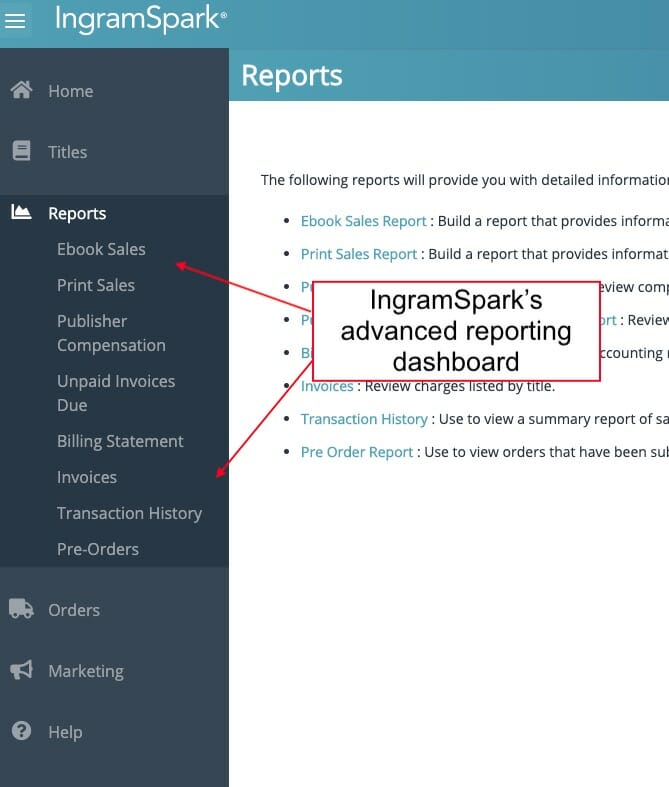
How does IngramSpark work?
Earlier last year, a well-known print on demand service called CreateSpace, that had been owned by Amazon and worked exclusively with self-published authors, or those looking to become an author, to create the majority of print books available, was taken over by KDP. This came as no surprise as Amazon had gradually been offering print services to authors two years before merging CreateSpace with KDP.
In the self-publishing industry there are several other print on demand services—Lulu, BookBaby, and Blurb—set up to meet demands of self-published authors. But in the past year, since CreateSpace has disappeared, IngramSpark is stepping up as a leader in the print on demand and global outreach distribution.
Here's how IngramSpark publishing works:
- Obtain an ISBN for each book format you plan to publish
- Format your book interior and cover design files
- Set up your IngramSpark account
- Select a service for publishing
- Publish your book on IngramSpark
- Distribute your book to retailers and libraries
- Manage your book files, and track sales and orders
What sets IngramSpark a part from other publishing platforms is their Global Distribution Network, which helps you get your book into retailers and libraries that other self-publishing platforms don't necessarily have access to.
Here's how IngramSpark book distribution works:
- Publish your book on IngramSpark's platform.
- IngramSpark connects your book to the distribution network, which includes access to bookstores, online stores, retailers, libraries, and universities.
- Retailer orders your book through IngramSpark's distribution channel.
- IngramSpark prints physical book orders and ships it to the customer, retailer, or library.
- You receive book royalty payments per book sold.
Where does IngramSpark distribute?
IngramSpark distributes book titles to over 40,000 retailers, libraries, schools, and universities, according to their website.
With print book distribution partners and online distribution partners, IngramSpark has a select network.
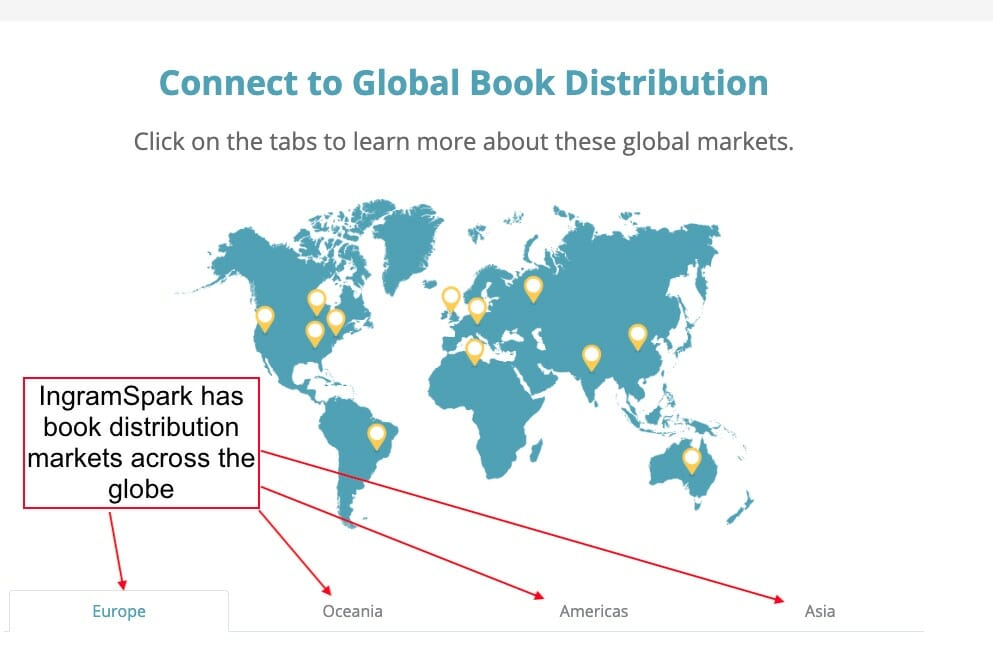
IngramSpark Review: Global Connect
IngramSpark's Global Connect is a model for wide distribution. It has gained a reputation for leading the industry when it comes to its Global Connect Program.
How effective is this system, and is it better than Kindle Direct Publishing? Let's take a look!
What is the Global Connect Program?
The Global Connect Program enables you, as an author, to get your book into deeper publishing channels that are otherwise not as readily available through Amazon.
This program is one of the foundational benefits of IngramSpark.
If you visit the Global Connect Program page you can see the map. Just click on the continent/region and IngramSpark provides you with a breakdown of the pricing. You can see the charts that give you an estimation of page counts and average prices for specific genres in global markets.
For example, take a look at the chart for the European market:
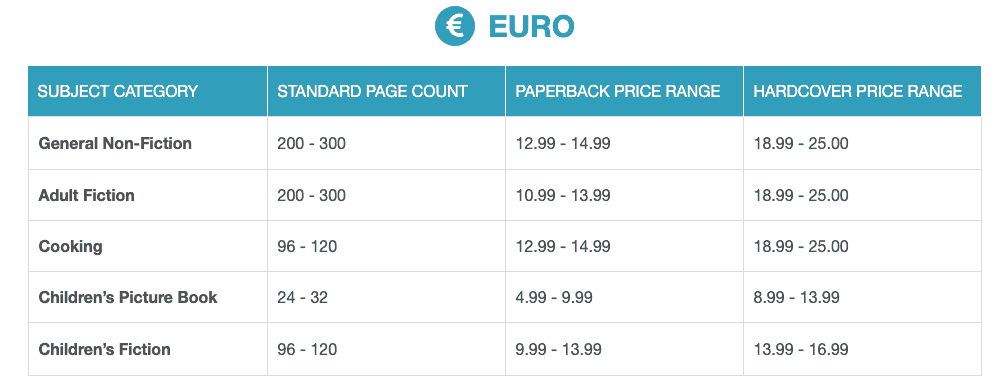
Here is the US global market:
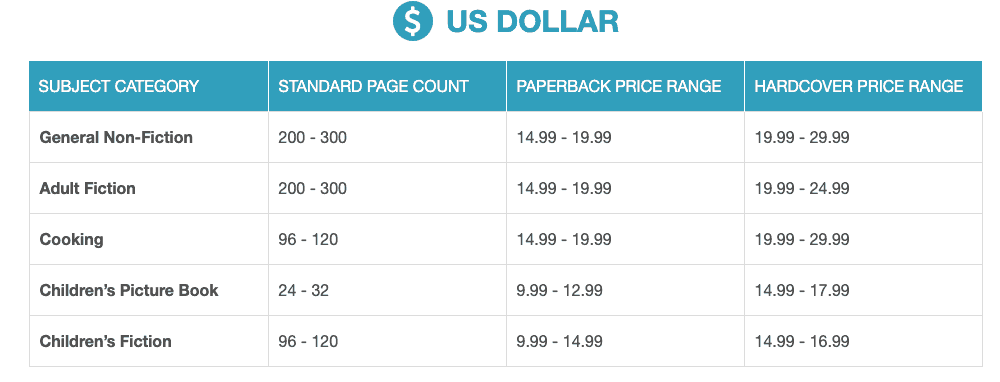
In addition, there is a built-in online royalties calculator. You plug in the details of your book and it calculates the cost based on trim size, paper color, binding and laminate type, and page count.
Using this tool, you can calculate how much you will be paid per title sold through distribution channels.
How much does IngramSpark cost?
IngramSpark pricing varies depending on the type of book and service that you select. It is $49 to publish both a print AND an eBook, whereas it is $49 to publish a print book only and $49 to publish an eBook only.
If you go through KDP for your publishing, as most authors know, it is free. Amazon makes their money from the royalties accrued through book sales.
What fee does IngramSpark take?
But IngramSpark does charge a fee. It is $49.00 per title. But that is not all.
To make any revisions to your book after it has been published could cost you a whopping $25.00 each time, and, you’d have to go through the publishing set up again.
Trust me, you want to do this only once. If you read one thing from this IngramSpark review, it should be this. Not only is it time consuming, but costly if you are always revising something.
Related: How Much Does It Cost to Publish a Book?
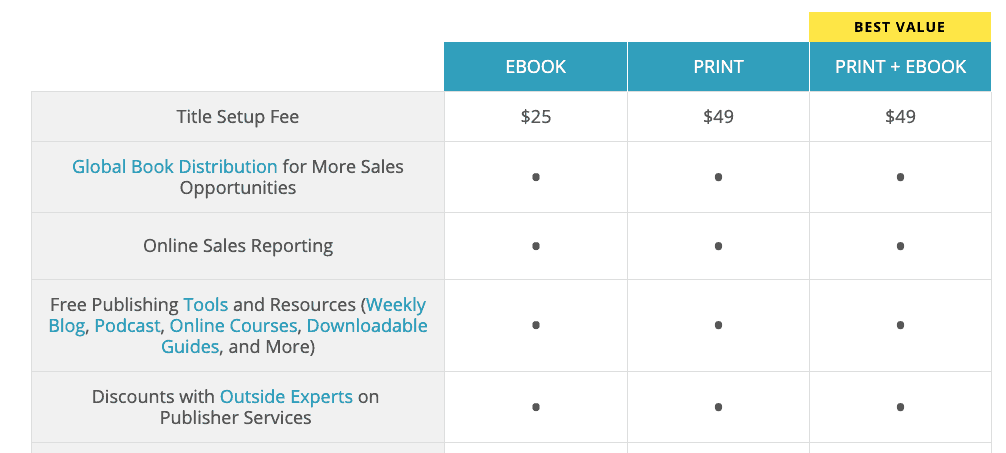
Ingram's book printing fees vary depending on the printing options you select.
For example at the time of writing this IngramSpark review, to print a single standard 6 x 9 black and white paperback book with 200 pages, it would cost $3.66 for printing fees, plus shipping and handling and taxes, totaling a cost of $10.09 for one book.
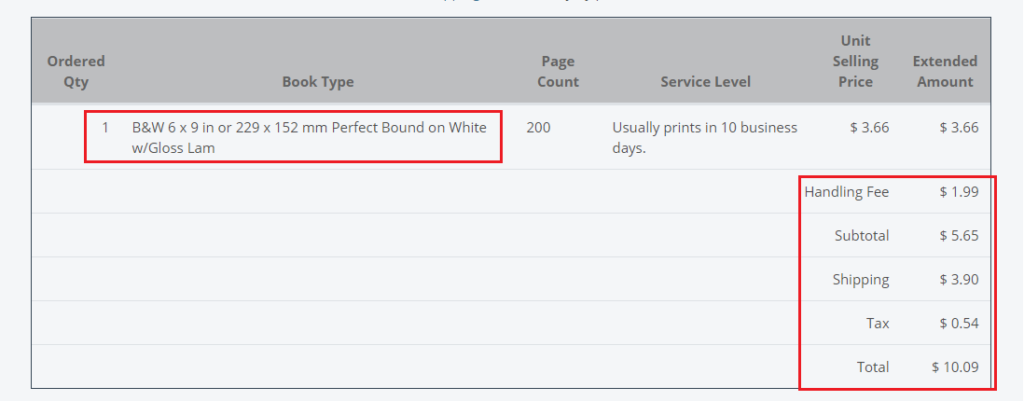
IngramSpark printing fees can be broken down as follows:
- Book printing, which depends on a variety of factors such as your book's trim size, page count, paper quality, color options, binding, and more.
- Handling fee, which is basically a service fee and can change depending on the quantity of books and the service level offered. If you order more books, the service fee appears to go down. For example, for one book the handling fee was $1.99, which can get pricier if you print only one book at a time. But if you order 1000 books, the handling fee is only $4.99.
- Shipping fee, which will change according to your shipping location, and shipping options. If you are shipping large quantities of your book, expect shipping fees to be more expensive.
IngramSpark offers a helpful printing calculator to help you determine the cost of IngramSpark's printing services.
Related: Word and Page Count Calculator
Reasons to use IngramSpark
But, how good is this company? What makes it different from KDP? Why would you publish with them and not Amazon? Or, do you use both sites together?
If you want to get your books into the bookstores like Barnes and Noble, you need to go through a publishing service like IngramSpark.
This is because IngramSpark's distribution service allows distributors (like bookstores and retailers) to order your book directly through the IngramSpark publishing platform.
In fact, most bookstores will not carry your book unless you are published through IngramSpark.
Here are some reasons to publish with IngramSpark:
- Global distribution. Get your book into libraries, bookstores, retailers, and universities across the IngramSpark distribution network all over the world.
- High quality book printing options, such as for hardcover printing and other specialty printing options.
- Variety of book type and size choices, including trim, special sizing, binding, cover options, spine, and paper quality.
- Convenience. Do you want to use one single publishing platform to distribute your book across multiple channels? If so, then IngramSpark is convenient, but this convenience does cost.
If you’re leaning towards publishing solely with Amazon and having your book exclusive on the KDP platform, there are a few disadvantages to be aware of.
Here are some disadvantages to solely publishing with Amazon:
- Amazon is exclusive. Amazon is not concerned with your book getting into libraries or bookshops. What is offered on Amazon, stays on Amazon (or that’s how they seem to want it, anyway).
- Amazon is named as your book publisher if you use their free ISBN. When you publish through other platforms like IngramSpark, you have your own ISBN registered in your name.
So, do you have to publish through IngramSpark? The answer is: No. For many self-publishers, we just want a copy of our book in hand, and Amazon does just that for a very cost-effective price.
However, if you’d like to build a book business and make being an author a career for yourself, you should expand your publishing outside of Amazon.
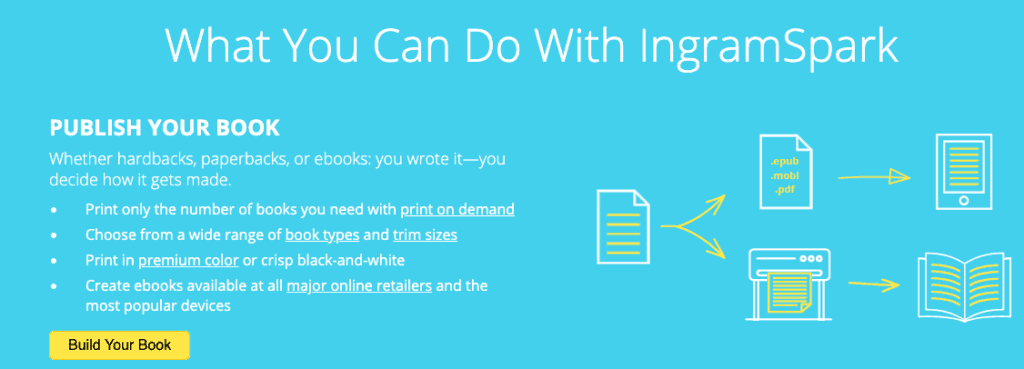
IngramSpark vs KDP
A question we get a lot is, what are the differences between Kindle Direct Publishing (KDP) and IngramSpark? So, we want to take a close look at this question in our IngramSpark review.
Related: Kindle Direct Publishing (KDP) Guide
How does IngramSpark work with Amazon?
KDP has taken over the services that CreateSpace used to provide, and the results that authors experienced through CreateSpace are almost the same. Books are still shipped promptly and the quality has almost the same look. And because most authors are on Amazon anyway, it just makes sense to publish the paperback on there as well.
So why use IngramSpark, and what are the primary differences between the two?
Here's a breakdown of the main differences in IngramSpark vs KDP:
| Feature | KDP | IngramSpark |
| Uploading Process | Easy | Difficult |
| Customer Email Support | Fast [Less than 24 hrs] | Good [usually within 24 hrs] |
| Publishing Cost | $0 | $49 |
| Revisions | Free, Unlimited | $25 each revision |
| Hardcover | No | Yes |
| Free ISBN | Yes | No |
| Publishing Cost B+W | $4.30 | $4.66 |
| Option for returns | No | Yes |
| Availability to Bookstores and Libraries | Limited | Yes |
Here are the biggest differences between IngramSpark and KDP:
- The cost of color print books. Amazon is more expensive.
- IngramSpark charges a fee for revisions. This could be expensive if you are an author that updates content frequently.
- IngramSpark formatting is difficult. This turns a lot of self-publishers away.
- Amazon does NOT offer hardcover book printing.
- Amazon Support is top notch. Representatives are clear in their response to customer questions.
- IngramSpark’s website is frustrating with its outdated interface.
IngramSpark and KDP Print: Can I publish my print book with both?
An option many publishers use is to hook up IngramSpark with KDP and publish on both platforms.
When you are setting up your book you can certainly combine the two POD services and get the best of both worlds.
Note: If you go this route and publish on both, be sure to opt out of the expanded distribution option with Kindle.
Step-by-step guide to IngramSpark
Now that we've covered the many details in this IngramSpark review, it's time to look at the process.
Are you ready to take a look at how the upload process works with IngramSpark? In this section, we'll go step-by-step to cover all the essential bases you'll be in charge of covering.
Go through the steps, allow for trial and error in some areas, and be patient. Here we go!
Setting up your account
Before you start working with IngramSpark, you should visit their resources section here and set up your account if you haven’t done so.

Here’s what you will need to set up your book with IngramSpark:
- Your own ISBN
- Book cover and interior files
- Email address
- Payment method
- A lot of patience. The learning curve can be challenging and time-consuming.
How it works
One of the first things to realize about IngramSpark is that it is not as easy as KDP to upload and publish your book.
They have a 35-page IngramSpark file creation guide that I would recommend you download before you even think about setting anything up.
Trust me, as intimidating as it can be, you will need to download this and make sure you have adhered to everything in the guide as it relates to your type of book.
Prepare yourself
Before we begin, it is important that you know a few things about working with the IngramSpark website: it is very different from that of Amazon.
By that we mean, it is not as easy to work with, for several reasons.
First of all, your progress may [or may not] save as you place your details into the boxes. The site will time out as well if you step away from the computer for awhile, so if you don’t save what you have put into the pages, you could come back and have to start over again.
Here are two tips for uploading your book to IngramSpark:
- Open up a page in GoogleDocs and copy the content that would take you time to rebuild if the platform times out on you. This way, when you lose it and have to start again, you can just copy and paste.
- Refer to the IngramSpark file creation guide. You might have to contact your cover designer and formatter for specific changes to your manuscript. This depends on the type of book and specifications needed.
- Have all materials and information ready and prepared as much as possible to avoid the platform timing out.
- Understand that this information and the process IngramSpark is using could change at any time as they make updates to the site.
Now, let’s quickly run through the uploading and publishing phase.
If you are ready, we have broken down the seven steps you must take to set up your book on IngramSpark.
But first things first, if you haven’t done so, sign up for your free IngramSpark account or sign in.
Step 1: Add new title + sales reports
In this section you are adding your title. All of your titles will appear in the “Recently Added Titles” section.
You can also view your ebook sales, POD sales, and current top selling titles.

Step 2: Edit title + book details
Choose the format of your book to upload first.
IngramSpark allows you to upload the ebook and paperback at the same time and this is a big time saver.
But remember that if you have already published an ebook on Amazon within the last 30 days, you cannot publish to IngramSpark.

This next section is rather long but includes the critical information for your book.
Now, you can plug in these details for your book:
- Add the title of your book
- Add your subtitle here.
- Select the language you are publishing in: English, Spanish, French, or Chinese?
- Short Book Description: Here you can enter a very short description of your book, and with a space of only 350 characters. This is just a few sentences so make it concise.
- Enter your Keywords. If you need assistance with this, we recommend using the Publisher Rocket software for accurate keyword choices. Remember: You want to maximize your book’s discoverability by researching the best keywords users will be searching for.
- Add a Series Title (if relevant). Is your book part of a series? If it is, list the series number here.
- Add the Edition Description: This is necessary if you update and change the book for future editions. This is usually books published in various formats such as hardcover, ebook, or reprints.
- Enter the Book Description: Here you can insert a more robust description of your book, up to 4000 characters. Be sure to include all relevant keywords associated with your book. This is what the search engine uses to make your book discoverable to readers.
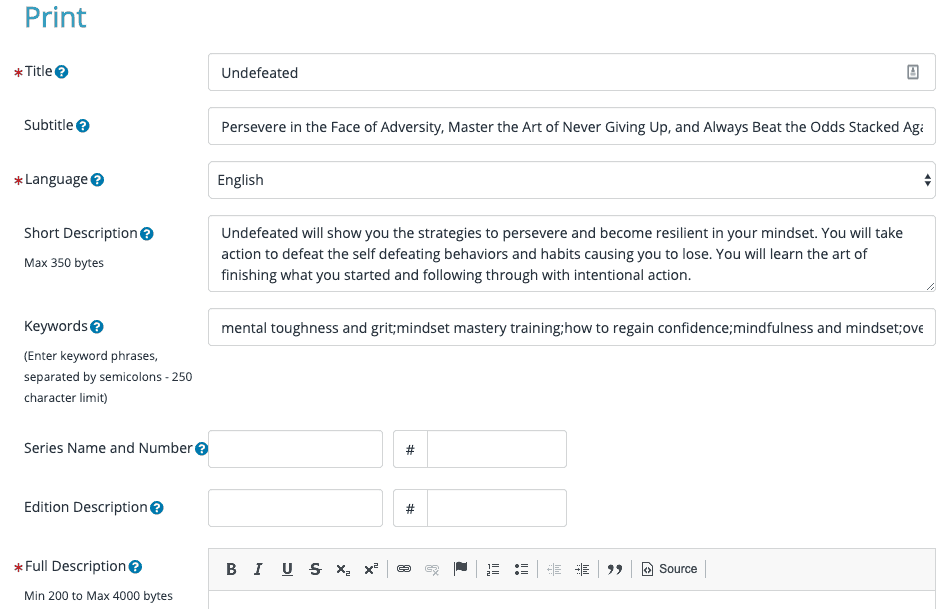
Step 3: About the author and contributors
Now, you will add in your author name.
Then, you can add two more names for contributors to your book project. This could be editors, illustrators, cover designers, or proofreaders.
This can be a bonus for your contributors as it enters their data into the metadata and makes these people more searchable.
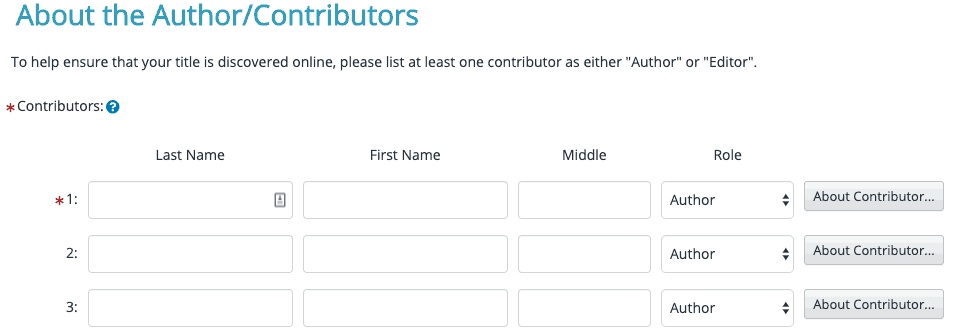
Step 4: Category, subject, and review snippets
This is an extensive section and will take time to set up. If you haven’t done so, I would recommend gathering review snippets from your book if you have published an eBook on Amazon and it has reviews.
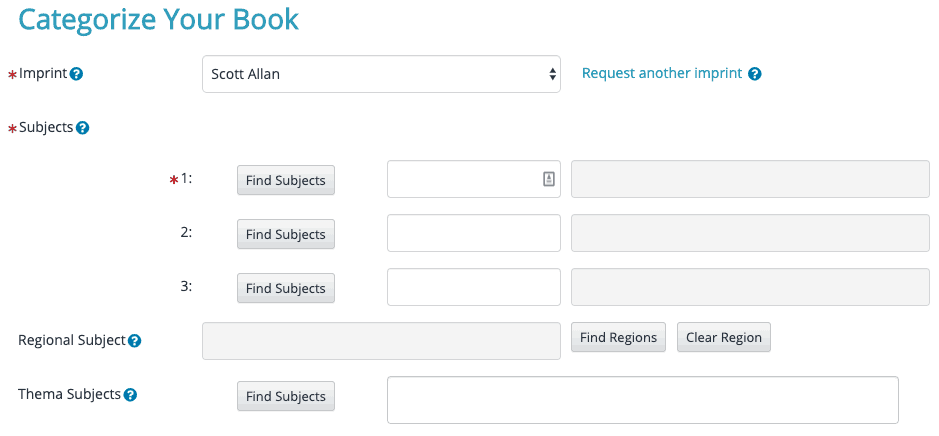
#1 – Imprint: What is an imprint?
“An imprint is a trade name used by a content provider to identify a line of books or a publishing branch. The imprint name is typically displayed as “publisher” on most retail sites. If you want the imprint to be different than your business name, click the link to request another imprint.”
www.IngramSpark.com
For the imprint, you can put your author name. If you have your publishing company registered as the publisher, this would be required here.
#2 – Subjects
These are your categories. Similar to Amazon where they allow you to choose two categories within the KDP bookshelf, with IngramSpark you can choose three. In order to find the best categories, you can use Publisher Rocket.
Choose book categories that you can compete in that are niche specific with low competition. These categories are getting harder to find these days with the number of books being published per day/month, so you might have to do some deep searching. For reference to BISAC you can jump over to the site and enter the code instead.
#3 – Regional subjects
If you have a book about a specific geographical area, this is important.
#4 – Thema
A relatively new book classification, similar to BISAC, Thema is a multilingual subject category scheme designed to meet the needs of publishers, retailers and trade intermediaries in all sectors of the global book publishing business. It is managed by an international group of stakeholders, and is free to use.
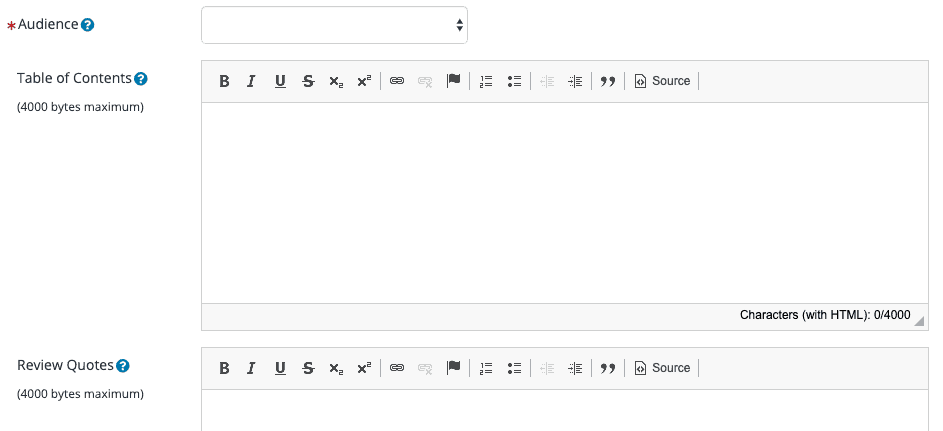
#5 – Audience
This is straightforward. Is your book intended for adults, teens, or children? Choose from the appropriate category in the drop down menu.
#6 – Table of contents
If your book has a TOC, you can copy it and paste it into the box here. You have enough space for 4000 characters.
#7 – Review quotes
Use this space for reviews already posted for your book. This is a great way to gain traction for your book. You can post up to 4000 characters.
#8 – Illustrations/pictures
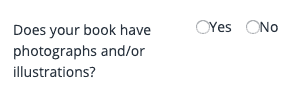
Select “Yes” or “No” and move onto the next section.
Step 5: Print format & edit title
One of the most important steps of your book, and most detailed for IngramSpark to calculate the cost of printing and shipping, is putting in the details for trim size and all related formatting details.
#1 – Trim Size: Click on the drop down table and you can choose the size of your book. Most industry standard sizes are generally: 5×8, 5.5×8.5, and 6×9 for tradeback books. IngramSpark proivides users with a Trim Size Matrix table to help with selecting your book size.
Note: The PDF you upload for your paperback/hardcover must match the book size you select. If not it will be rejected after submission.
#2 – Paper color: Choose Black and White or Cream.
#3 – Binding type: Based on the format of the book you want to publish. You must have a separate ISBN for both Paperback and hardcover.
#4 – Laminate type [cloth, gloss or matte]: For trade paperback books, perfect bound is the most often used as it gives you a clean glued edge for the binding. From here choose matte or gloss. Personally, I prefer Matte finishes because it looks cleaner and doesn’t scratch as easy.
#5 – Page count: Put in the number of pages for your book. This will determine the overall spine width.
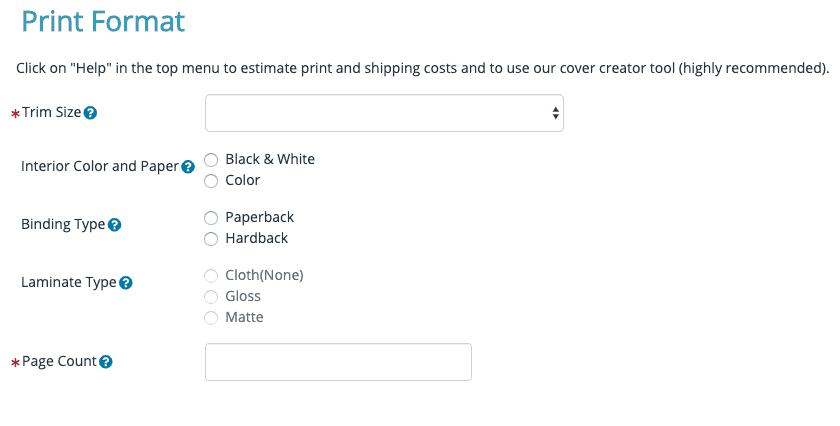
Click “Continue” to jump over to the next step.
Step 6: ISBN
The first thing to do is to insert your ISBN number, assuming you have already purchased one. If you have not purchased one, you’ll want to follow the steps to get an ISBN depending on where you live.
If you're trying to figure out, whats an ISBN, we answer that here.
If you don’t have one yet and you are located in the United States, you can visit Bowker.com and purchase a single ISBN or, if you are planning to publish multiple books, a block of 10 or 100. Of course, if you're working with us, we provide ISBNs for your book.
You can check the table here:
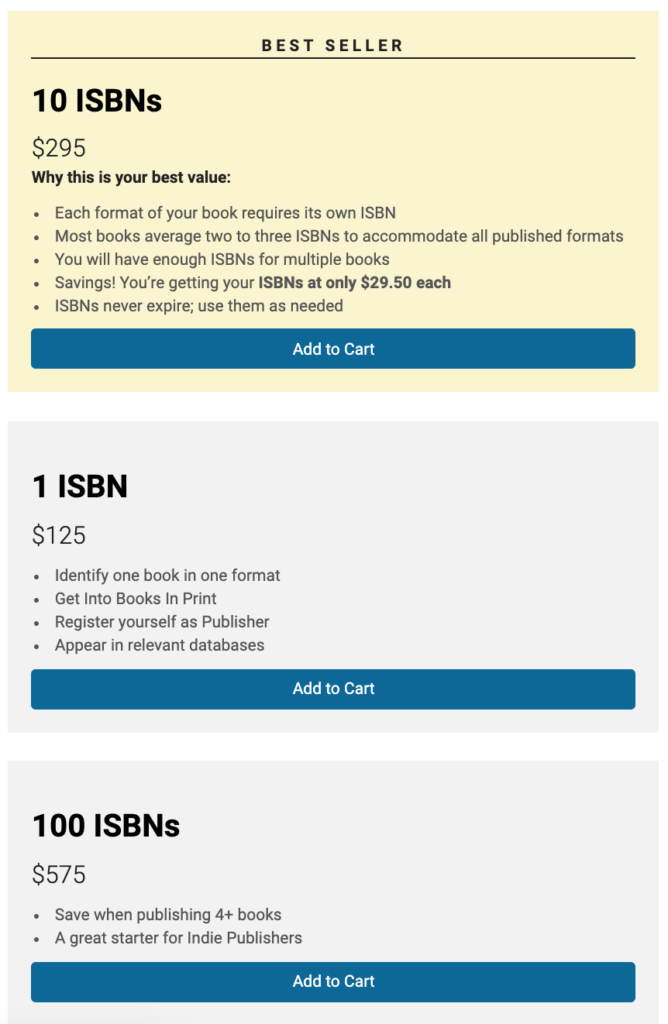
Transferring an ISBN
You cannot transfer your ISBN from Amazon to Ingramspark. You have to buy your own ISBN from Bowker. Or, if you are an international author, you would need to purchase this from your local agency.
Likewise you cannot transfer any other ISBNs from other retailers. Your book can be issued one ISBN at a time. If you got an ISBN for free from another retailer, you’ll have to give it up and get a new one.
Step 7: Setting the book price
Begin by entering the pricing for your book. You will have to experiment with this somewhat to get an idea for what IngramSpark gives you for a royalty per book.
They will provide you with the minimum list price for your book, based on production and fulfillment costs, plus the discount retailers get for their profit margin.
You will notice IngramSpark gives you the 55% discount option, and this is the best choice to make.
It allows book retailers to buy the book at a discounted price and sell for full retail. By not setting the discount it may sway retailers from not buying the book.
Next, you can link your pricing up to the Global Connect Program and make it available worldwide.
Lastly, plug in your publication date. This date will be printed on the book’s details page on retail sites.
Caution: selecting “yes” for book returns
There is a risk worth mentioning here. If you select the option to have books returned to you, keep in mind if the books don’t sell, book retailers can return these to IngramSpark, and you pay the costs. Imagine if a retailer orders 2000 copies, sells 300, and returns the rest?
On the other hand, bookstores likely will not buy and stock your book without this option to return. So, you are either stuck without book sales, or stuck with books that don’t sell after they have been returned.
Think about this option, and if you want to have them returned to you…or destroyed.
Step 8: eBook format
With the paperback mostly wrapped up, you can focus on the eBook.
Remember: If you published your eBook on Amazon within the last 12 months, you cannot publish on IngramSpark at this time.
#1 – ISBN: Your eBook needs an ISBN. If you purchased that, enter the number in. If not, you can grab it here at Bowker.com.
#2 – Pricing: Follow the same guidelines as per the paperback. Check out other eBooks in your niche and price accordingly based on competitors.
#3 – Publication date: Fill in your date of publication date here.
#4 – On sale date: This is your book launch specified release date.
#5 – Page count: Enter the page count here.
Once you’ve entered these details, you can move on to the last step.
Related: How to Publish an eBook
Step 9: Uploading your files
Now you will upload the interior files [PDF] and your cover file [PDF]. Similar to KDP, IngramSpark will scan through and make sure everything is legit.
If there are any errors with formatting, IngramSpark will let you know and you’ll have the chance to fix everything before publishing.
You can then order a proof copy of your printed edition, which we recommend doing.
Congratulations! That is the process for publishing your book on IngramSpark.
The pros and cons of IngramSpark
There are pros and cons to using this service, and this IngramSpark hopefully highlighted some of the main benefits and disadvantages.
Depending on the type of author you are, and where you are with your author career, these pros and cons may vary. Let’s consolidate everything here.
Here are the pros of using IngramSpark to publish your book:
- High quality printing. IngramSpark uses the best technology for printing. Quality of the print books are top notch, which makes it best for specialty hardcovers and children's books with a lot of illustration.
- Bulk discounts. IngramSpark offers higher discounts for large bulk purchases.
- Global distribution. IngramSpark has a larger distribution network than any of the competitors.
- Email support. Fast response to email. I messaged IngramSpark over ten times during the writing of this post to test customer support. All responses were answered within 24 hours [Monday to Friday]. If you email on Friday night, expect a response by Monday afternoon.
- Convenient all-in-one platform with publishing, distributing, and advanced dashboard logistics.
Here are the cons of using IngramSpark to publish your book:
- Expensive printing costs. Especially true if printing hardcover books.
- Additional fees add up. Set up fee [$49] and recurring fees for revisions [$25].
- Extensive learning curve. Yes, there is a lot to know in order to publish successfully with IS. Remember that 35 page report you downloaded?
- Website interface. While the dashboard is robust, it can be confusing to navigate. Remember to save your book details in case they get wiped out if the page refreshes.
- Formatting requirements are heavy. This can be time-consuming getting everything up to IngramSpark's standards.
IngramSpark review: Is it worth it?
If you are an independent publisher looking to get your book into the retail stores, you have a book with plenty of color photos or are a children's author, and quality is an issue, than yes, IngramSpark is a great choice.
Also, if your goal is to focus on wider retail distribution and libraries, IngramSpark will help you to achieve this goal. You will be able to expand on your profit and do it with minimum distribution costs.
You should publish with IngramSpark if…
- You need high quality specialty printing for hardcover books.
- You need the convenience of an all-in-one platform that will handle your distribution.
- You want your book in wider distribution channels like libraries and retailers.
If none of the above, you are just as well to go with Amazon’s printing services, save some money and be able to publish relatively pain free without the hassle of the many formatting regulations IngramSpark requires.
Creating and setting up your book through IngramSpark can be a cumbersome process.
There is a learning curve here that many authors don’t have the patience for. If you are used to working with KDP Print for your printing options, it is understandable why IngramSpark is not in favor for many writers.
You should NOT publish with IngramSpark if…
- Your eBook is already on Amazon. This is considered an “existing agreement” and you will need to suspend any Amazon KDP Select activity for a 90 day exclusivity period.
- You don't have the time or patience to learn the platform.
- You want to save money on printing and service fees, and don't need any specialty printing services or hardcover printing.
- You simply want to publish your book, and aren't concerned with global distribution.
Final thoughts on this IngramSpark review
Time to wrap up our thoughts on our IngramSpark review! Overall consensus?
On a scale of 1-10, we rate IngramSpark an 8 for book quality, distribution and global reach authority, not to mention better discounts for high volume of books.
For a certain type of author, yes, IngramSpark is worth it.
At the very least, give IngramSpark a chance and set up your title in print form, even if you choose to ultimately not publish with them.
It never hurts to try something new and, many authors have had great success with the platform after the learning curve.
Will you publish with IngramSpark?

